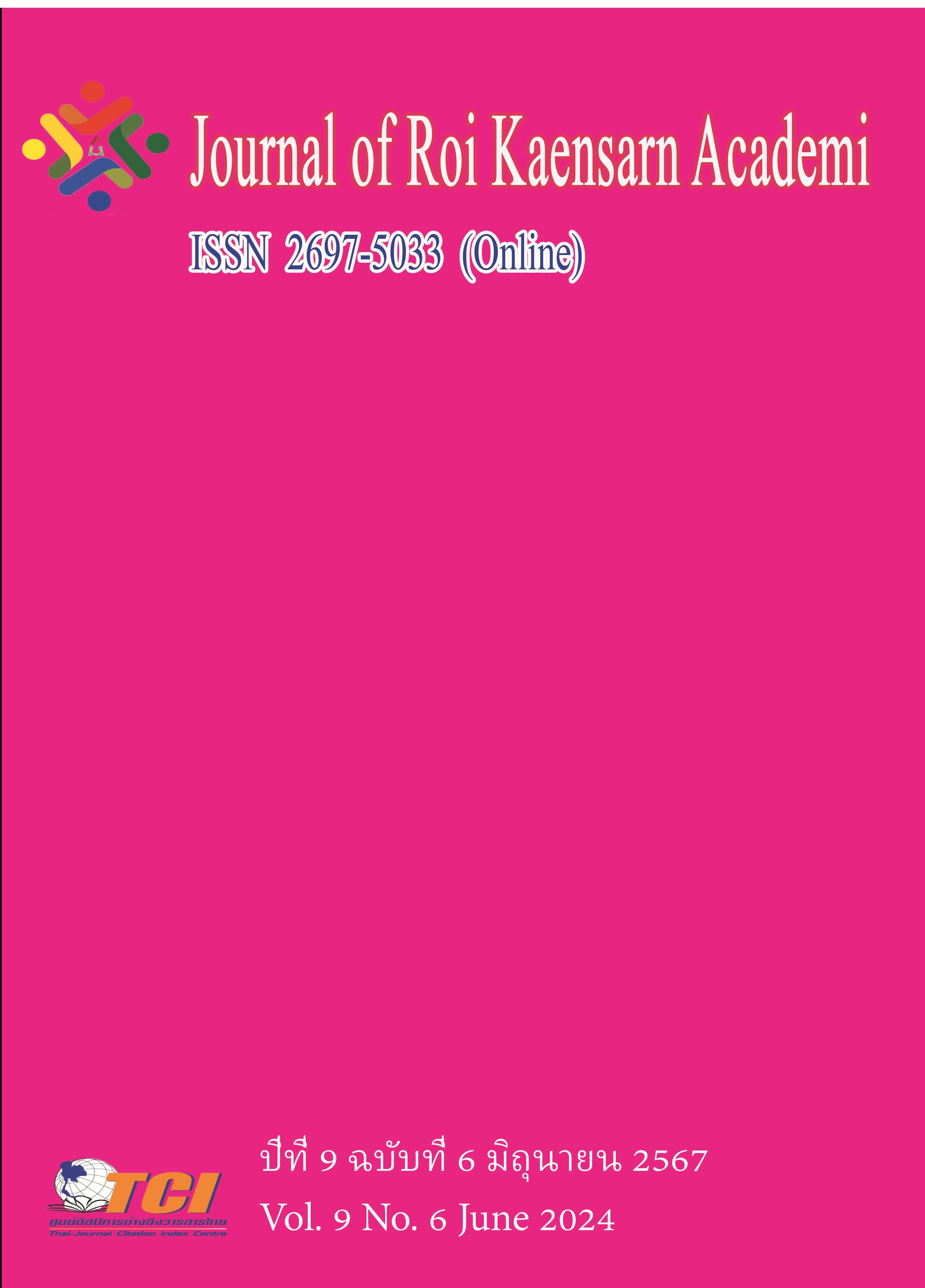The Guidelines of Leadership Characteristics in the Entrepreneurial Success Development of Guilin University Students in China
Main Article Content
บทคัดย่อ
This study addresses the gap in leadership development within China's "Mass Innovation and Entrepreneurship" initiative, focusing on enhancing practical leadership skills among university students. This research focused on evaluating the leadership characteristics crucial to the entrepreneurial success of students at Guilin University in China. It also aimed to develop and implement a short-term leadership development curriculum for aspiring entrepreneurs. The study was structured into four phases: the first phase involved surveying 341 junior students from six Guilin universities using a questionnaire and analyzing the data with basic statistics. In the second phase, semi-structured interviews were conducted with 11 experts and 11 students, and the data was analyzed through content analysis. The third phase saw seven experts evaluate the curriculum's structure for appropriateness, feasibility, and utility, with statistical analysis of the data. The fourth phase involved delivering the training program to 30 volunteer students from one university.
The research findings indicated that the overall current state of leadership characteristics among the students was at a high level. It was determined that the curriculum designed to foster leadership characteristics in students aspiring to entrepreneurial success should align with the objectives and traits of the students. The developed short-term curriculum comprised a six-day training program, which included 16 hours of theoretical learning and 32 hours of practical activities, totaling 48 hours. The curriculum was divided into six modules: physiological traits, socioeconomic characteristics, intellectual traits, personality traits, task-related traits, and social characteristics. Furthermore, the trainees' average scores increased significantly from 60.33% before the training to 88.33% after the training, with an average of 79.53% in practical tasks. Additionally, trainee satisfaction was reported to be very high. The findings affirm the curriculum's success in bridging the gap between theory and practice, enhancing leadership skills essential for entrepreneurial success, and aligning with China's educational and economic strategies to foster innovation.
Article Details
เอกสารอ้างอิง
China Youth Daily. (2022). China youth entrepreneurship development report (2022) released. Online. Retrieved August 1, 2023, from https://baijiahao.baidu.com/s?id= 174978523 8729887580&wfr=spider&for=pc.
Farrell, L. C. (2014). A new era of entrepreneurship: Individual, enterprise and national entrepreneurship. China Machine Press.
Fu, Y., Xu, X., Wu, H., & Huang, K. (2023). Research on the cultivation path of entrepreneurial ability of university students. Journal of Jiangxi University of Traditional Chinese Medicine, vol (2), 106-110.
Krejcie, R. V., & Morgan, D. W. (1970). Determining sample size for research activities. Educational and Psychological Measurement, 30 (3), 607–610.
Liu, Y., & Xu, G. (2014). Research on the structure model of university students’ leadership from the perspective of feasibility development. Leadership Science, (32), 24-27.
Stogdill, R. M. (1974). Handbook of leadership: A survey of theory and research. Free Press.
The State Council The People’s Republic of China. (2015). Government work report (full text). Online. Retrieved August 1, 2023, from https://www.gov.cn/guowuyuan/2015-03/16/content_2835101.htm.
Wang, J., & Gao, X. (2022). Research on the development status and practical approaches of university students’ independent entrepreneurship. Investment and Entrepreneurship, (4), 34-36.
Wen, X. (2022). Research on the cultivation of university students’ entrepreneurial ability under the background of “mass entrepreneurship and innovation”. Investment and Entrepreneurship, vol (4), 37-39.
Zhang, L., Zhang, X., & Xi, Y. (2015). How leaders acquire resources: An analytical framework based on institutional theory, resource-based view, and leadership theory. Science and Technology Progress and Policy, 32 (04), 144-149.

